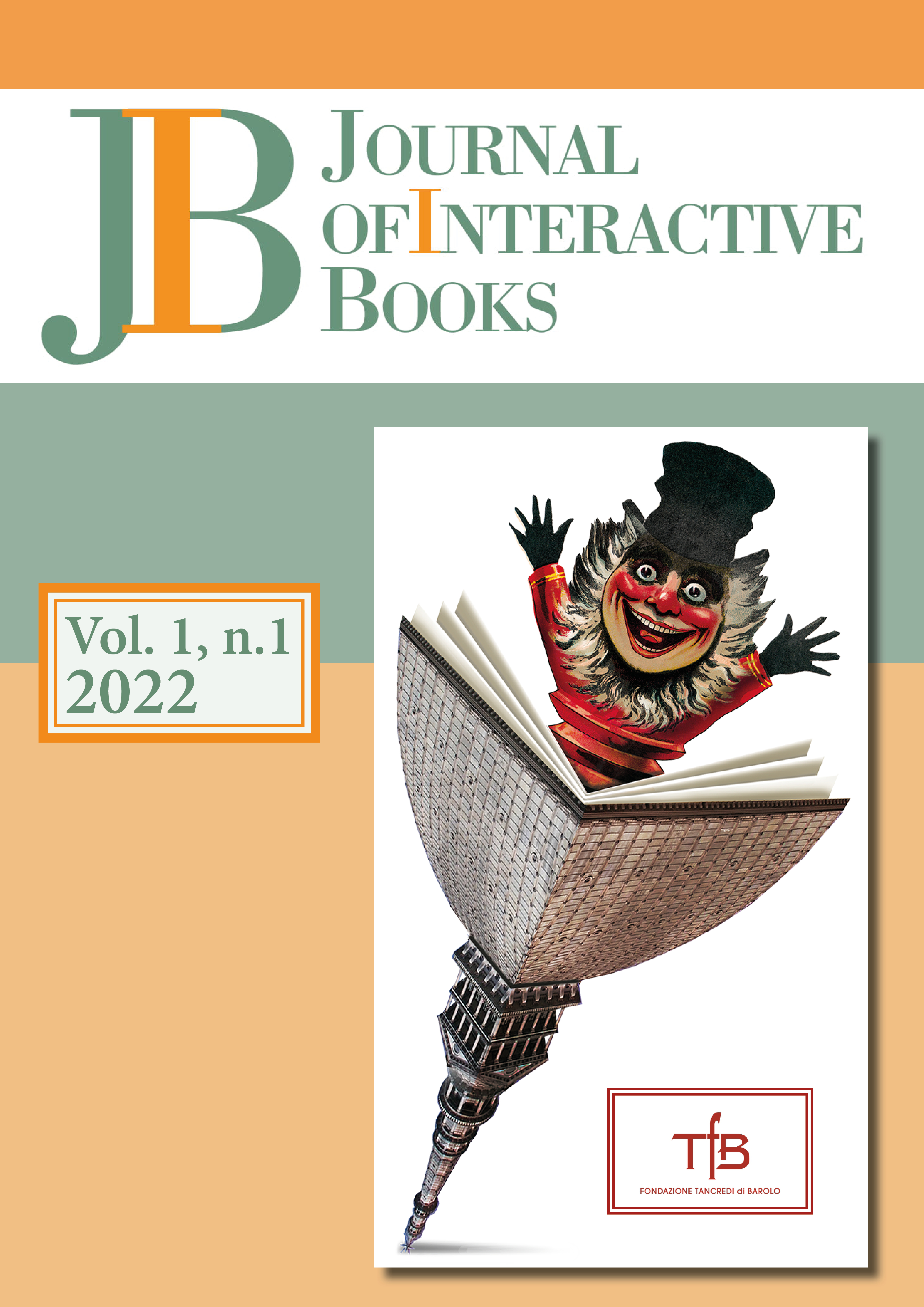Il restauro dei libri animati moderni: una sfida sulle problematiche metodologiche e pratiche conservative
Keywords:
Movable books; cataloging; research project; damage; restoration workAbstract
This research project was carried out by the Laboratorio di Restauro Carta e Fotografia of the Centro
Restauro “La Venaria Reale”, together with the Fondazione Tancredi di Barolo and the “Cecilia Gilardi”
Foundation. The aim of this research was to provide technical and conservative analyses of the principle
categories of modern moveable books, dating between the end of the eighteenth century and the first
half of the twentieth century. Thanks to the guidance and expertise of the President of the Fondazione
Tancredi di Barolo, Pompeo Vagliani, a study of the various examples of moveable books was undertaken.
First of all, the main types of damage were detected, mainly connected to the animation mechanisms and
the nature of the materials used in these books. After that, four representative books were selected for a
complete restoration work. These were a scenic book “Theatre Miniature”, a tab and flap book “Surprise
picture from fairy land”, a changing pictures book “Voici Le Marchand d’image a surprise”, and a unique
book, a “pull tab” made by hand by Luisella Terzi for Paola Lombroso, entitled “Le fiabe di zia Maria Mariu”.
The real challenge was the search for and the choice of original materials following specific tests in order
to find the conservative materials that were most suitable for the restoration of these texts. This choice was
made following scientific studies to identify the original materials used. What guided the planning and
execution of this process were considerations of their use and the attempt to recreate the working of these
“play things”. The book, “le Fiabe di Zia Mariu”, a unique and artisanal object, was presented as a case study
at the Conference because of its particular quality and historical value in the collection.
Downloads
Published
Issue
Section
License

This work is licensed under a Creative Commons Attribution 4.0 International License.
JIB is an open access journal that applies a "Creative Commons - Attribuzione" (CC-BY) license to all published material.
With the CC-BY license, authors retain the copyright on their contributions, while granting anyone the possibility to download, reuse, reprint, modify, distribute and/or copy the materials published by JLIS.it, with the sole condition that the author and the title of the magazine are correctly cited. It is not necessary to request further permission from the author or the editorial staff of the journal.


